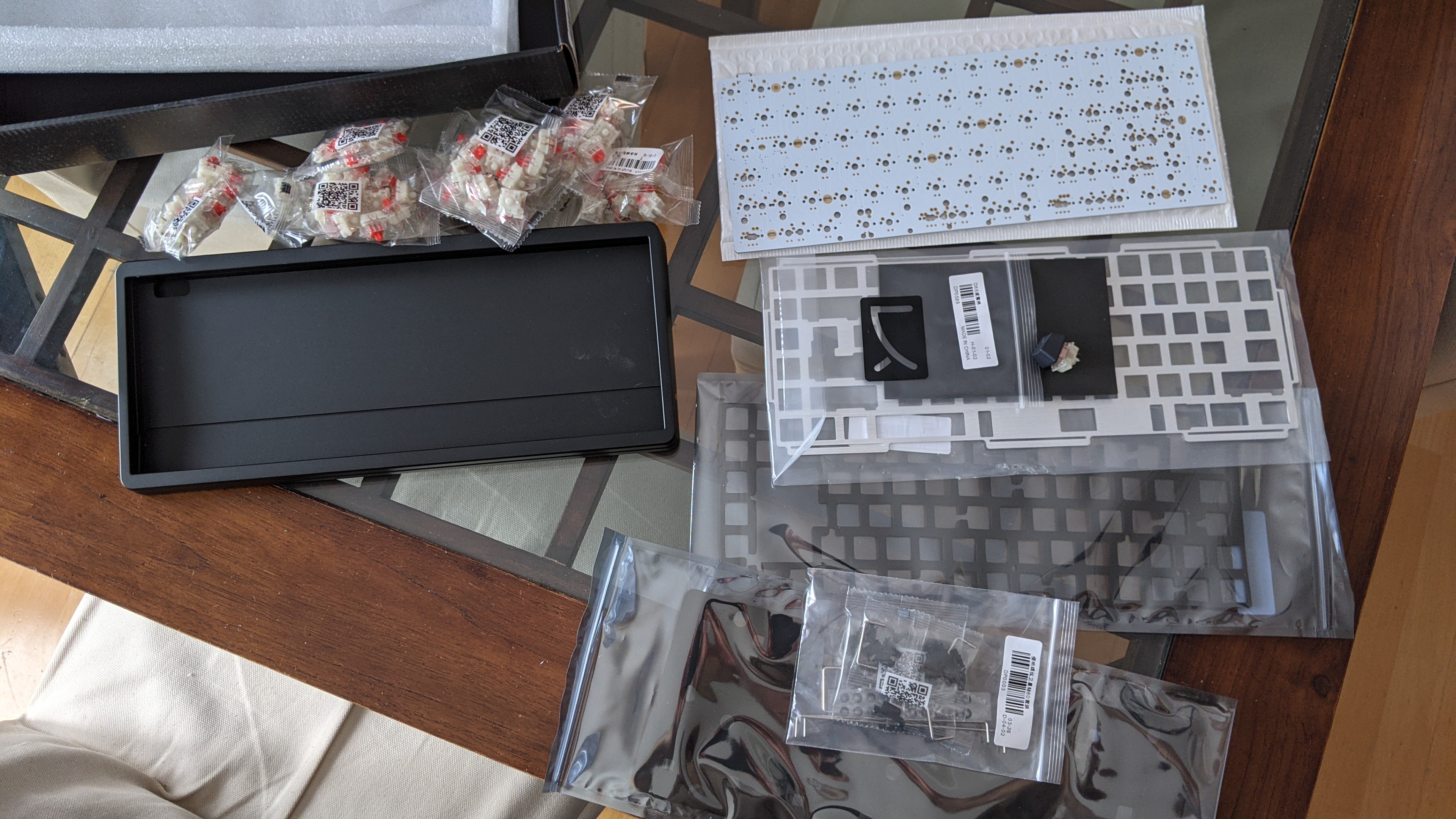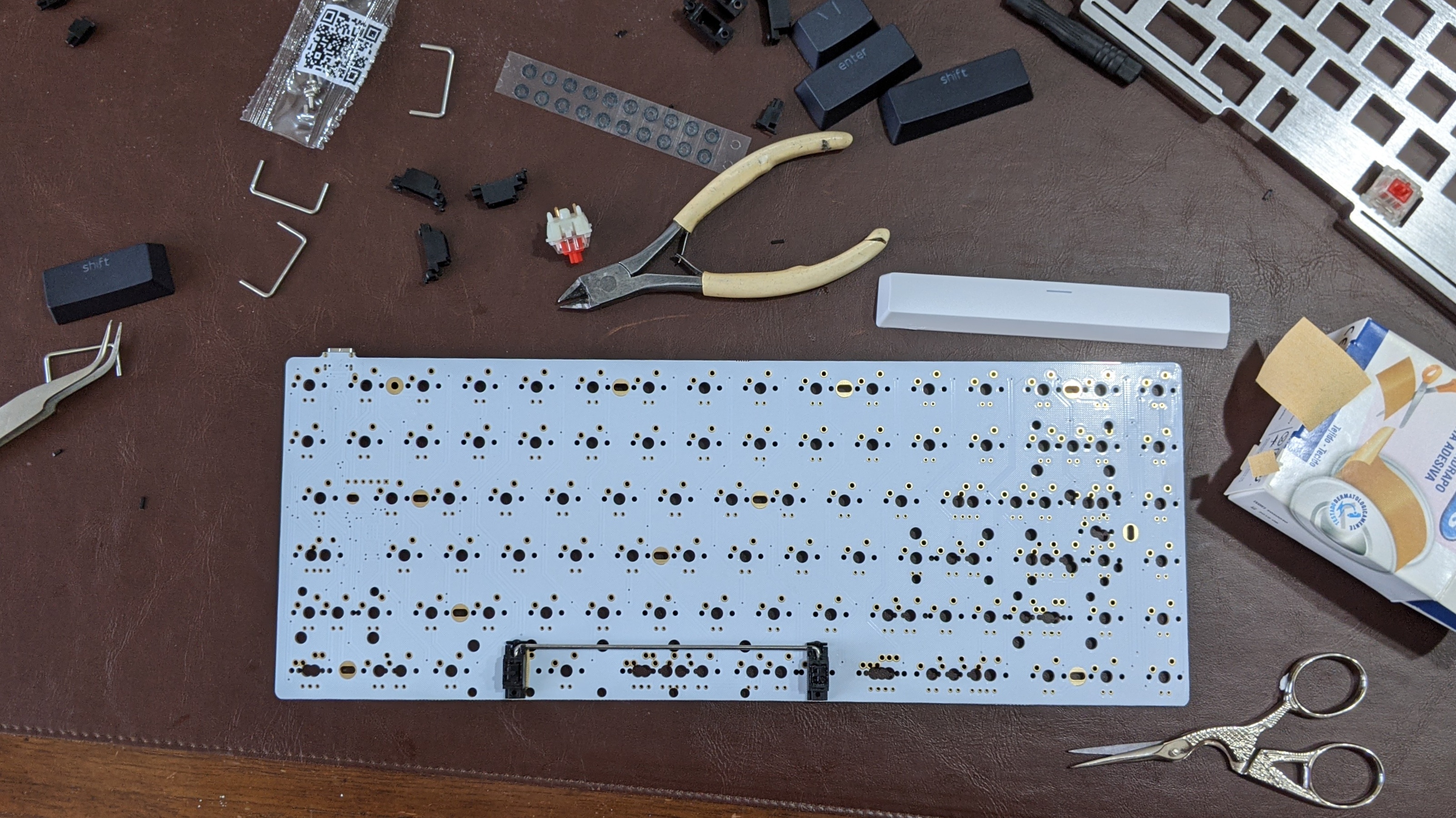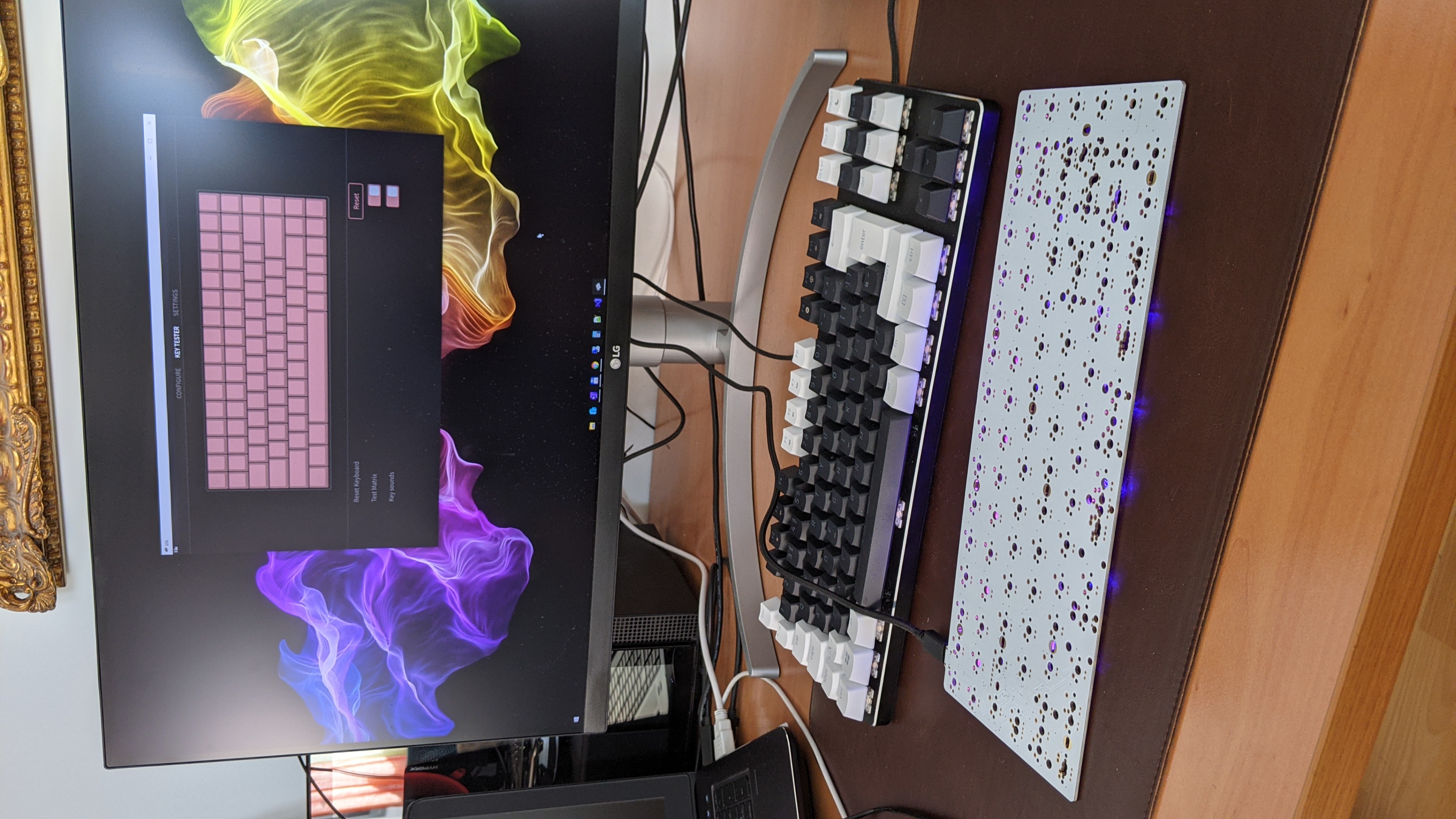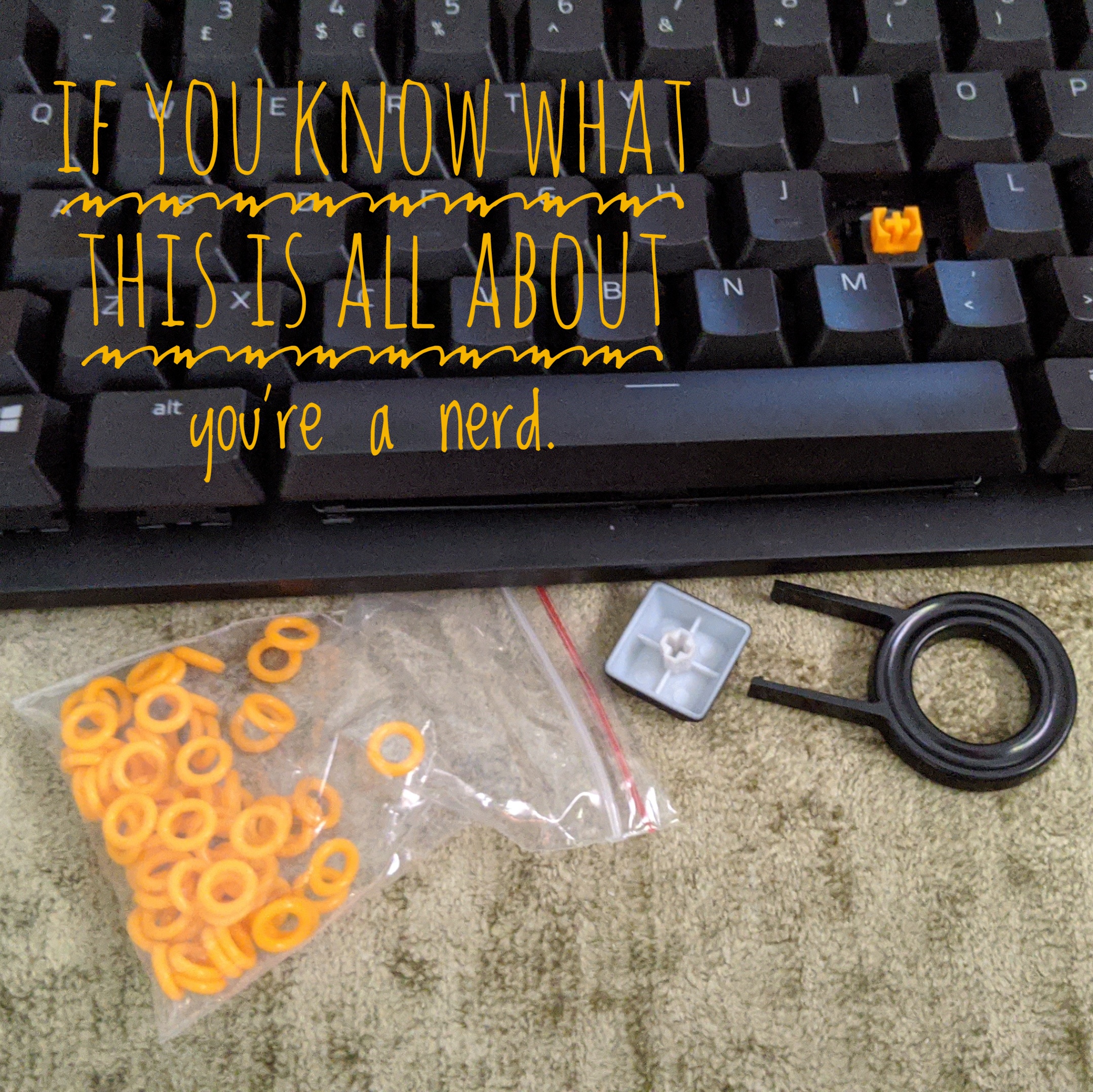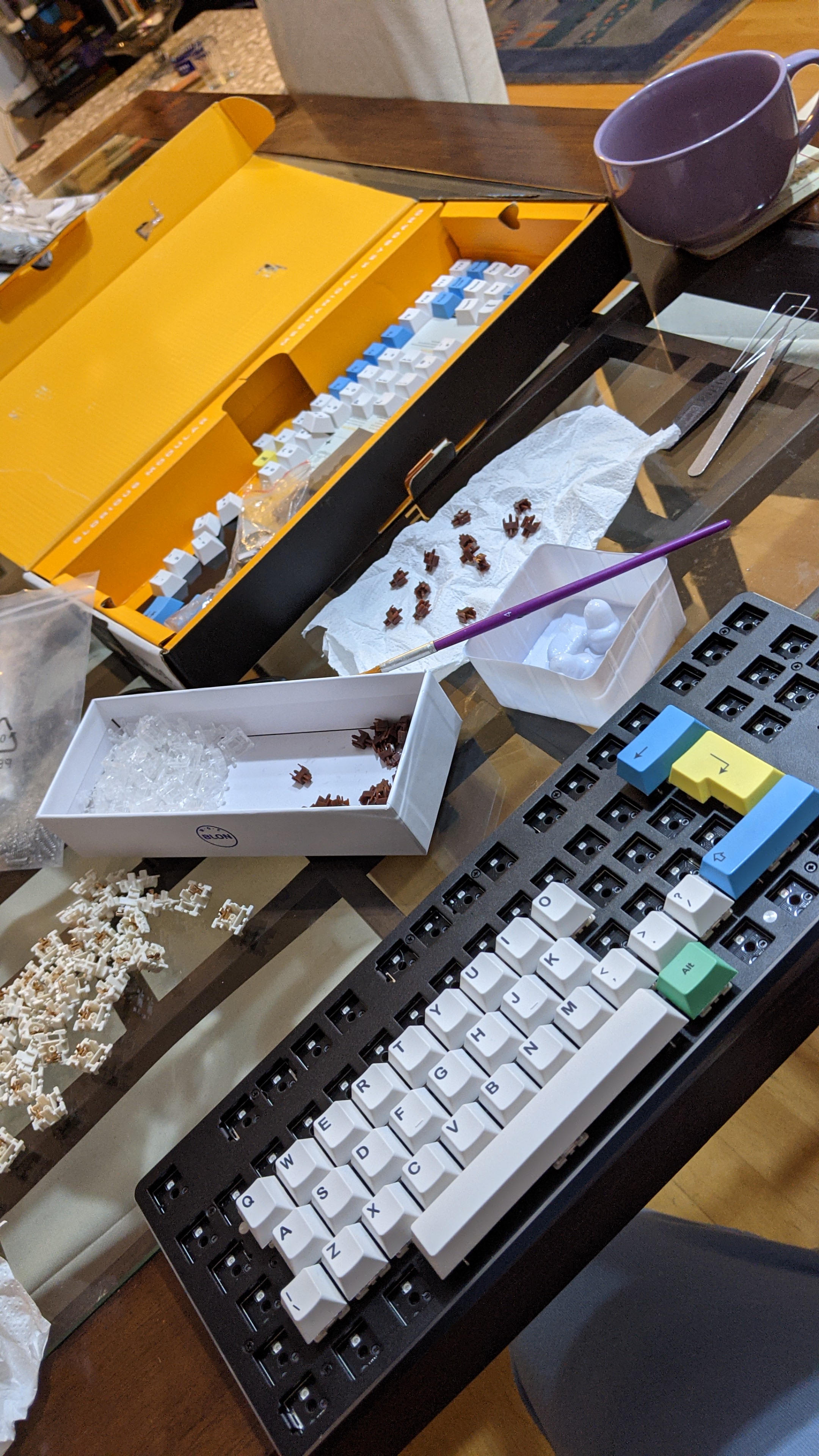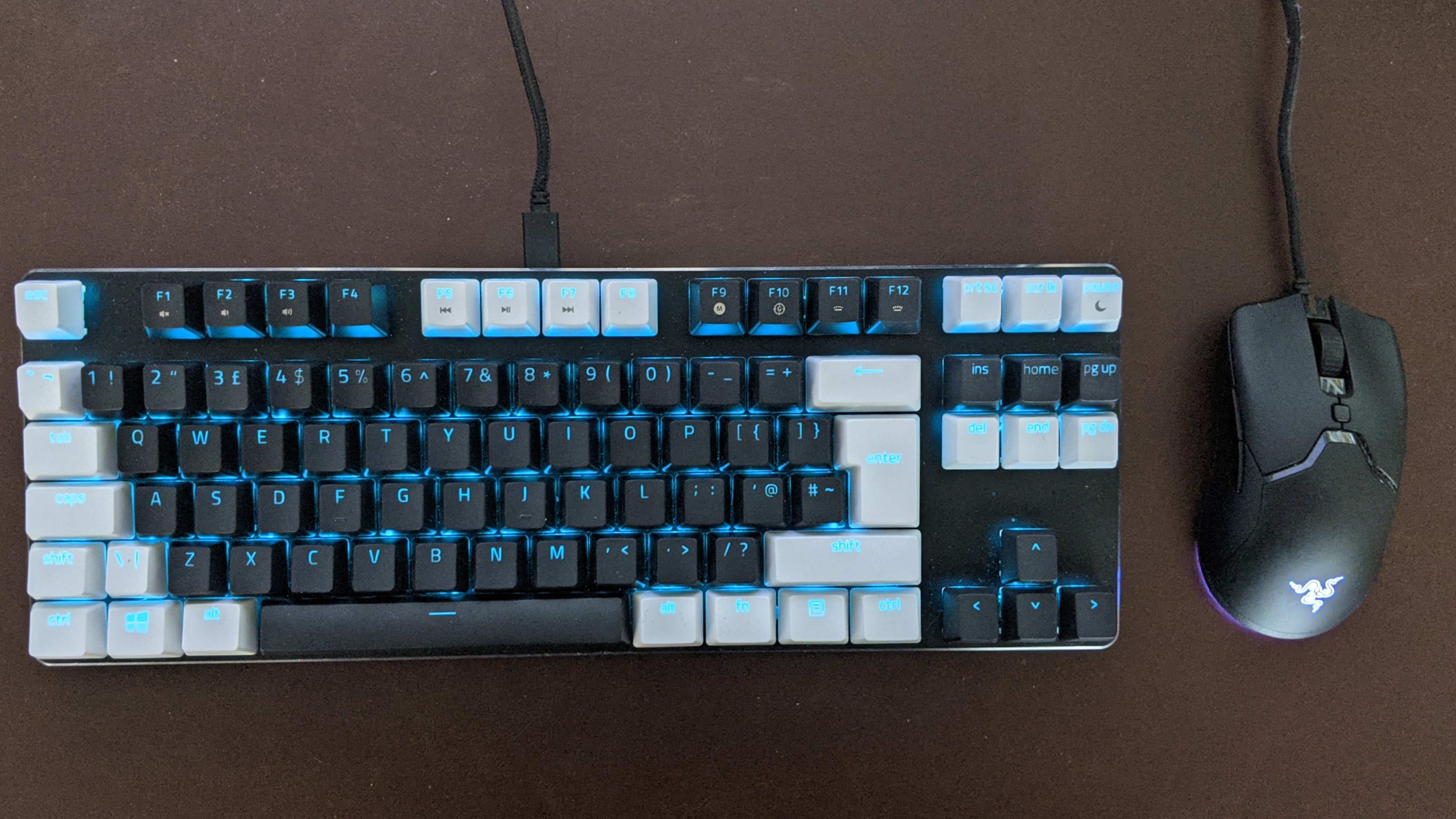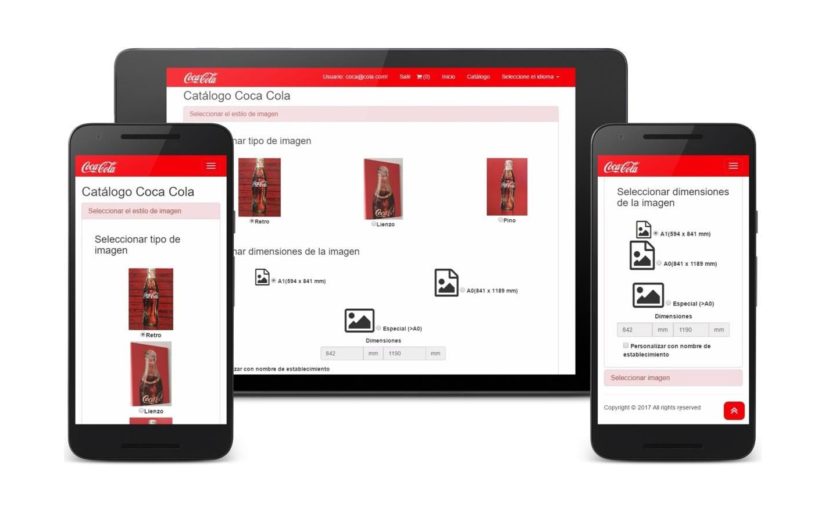Update: this project is still not quite complete, I’ll explain why as it may help others. I saw a build of another gasket mount KBDfans keyboard, a D65, where it was suggested it may be better attaching the foam gasket strips to the case rather than the board. I followed this advice as I thought it would mean the case would close better, but the downside is that the PCB can actually move, as happened to me when inserting the USB cable.
So a better solution, which I shall implement shortly, will be to have some of the foam strips applied to the case and some, especially the top left and right attached to the mounting plate. Luckily there are spare gaskets included in the kit. In fact if you compare this image with the one in the previous post you can see that the spacebar was actually rubbing on the case due to the gaskets being exclusively applied to the case.

My second re-working of the build will be to change the three 1U keys to the right of the spacebar to two 1.5U keys namely RCTL and RALT as I access layers by the remapping of the CAPS LOCK. CAPS LOCK + C is where the real caps lock is 🙂
If I were to repeat this build I wouldn’t have gone for the split backspace, but rather access those keys (which are vital for software development) via layers. But no way am I going to de-solder all the switches now to add the stab.
